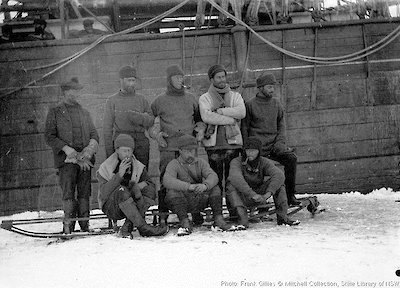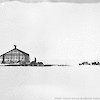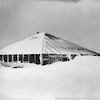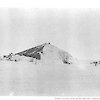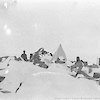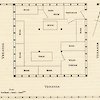Down to work
Making up the Western Party under their leader, Frank Wild, were George Harris Sarjeant Dovers (cartographer), Charles Turnbull Harrisson (biologist and artist), Charles Archibald Hoadley (geologist), Sydney Evan Jones (medical officer), Alexander Lorimer Kennedy (magnetician), Morton Henry Moyes (meteorologist) and Andrew Dougal Watson (geologist).
A small group of men facing a year in the greatest possible isolation was at risk of serious dysfunction. Mawson had taken special care in selecting the men: ‘a company of seven tough University graduates’ whom Wild would teach ‘the ways of Antarctica’. The year’s experience would justify his selection. He commented that Wild ‘did the job well’, a judgement supported by Kennedy in a diary comment: ‘I don’t think one could find eight men to agree so well’.
And now, with the ship gone, the men turned to the job of building the hut. ‘Harrison, Hoadley, Kennedy and Jones “turned the first sod” in the foundations of the hut, while Dovers, Moyes, Watson and I sledged along supplies of timber and stores,’ recorded Wild.
They were lucky with the weather: for seven days fine conditions were broken only by one ‘moderate’ blizzard. Six days into the work, while working on the hut’s roof, Harrisson made the party’s first geographical discovery: 32 miles distant a rise in the otherwise level surface of the ice sheet that marked an island beneath. It was to be called Masson Island, after David Orme Masson, a Melbourne scientist who was a major figure behind the AAE.
On the 28th [wrote Wild], the hut was fit for habitation, the stove was installed, and meals were cooked and eaten in moderate comfort. The interior of the house was 2 feet square, but its area was reduced by a lobby entrance, three feet by five feet, a dark-room three feet by six feet situated on one side, and my cabin six feet six inches square in one corner. The others slept in seven bunks which were ranged at intervals round the walls. Of the remaining space, a large portion was commodiously occupied by the stove and table.
On three sides, the roof projected five feet beyond the walls and formed a veranda which was boarded up, making an excellent store-room and work-room. This was a splendid idea of Dr. Mawson’s, enabling us to work during the severest storms when there was no room in the hut, and incidentally supplying extra insulation and rendering the inside much warmer. The main walls and roof were double and covered with weather-proof felt. Daylight was admitted through four plate-glass skylights in the roof.

